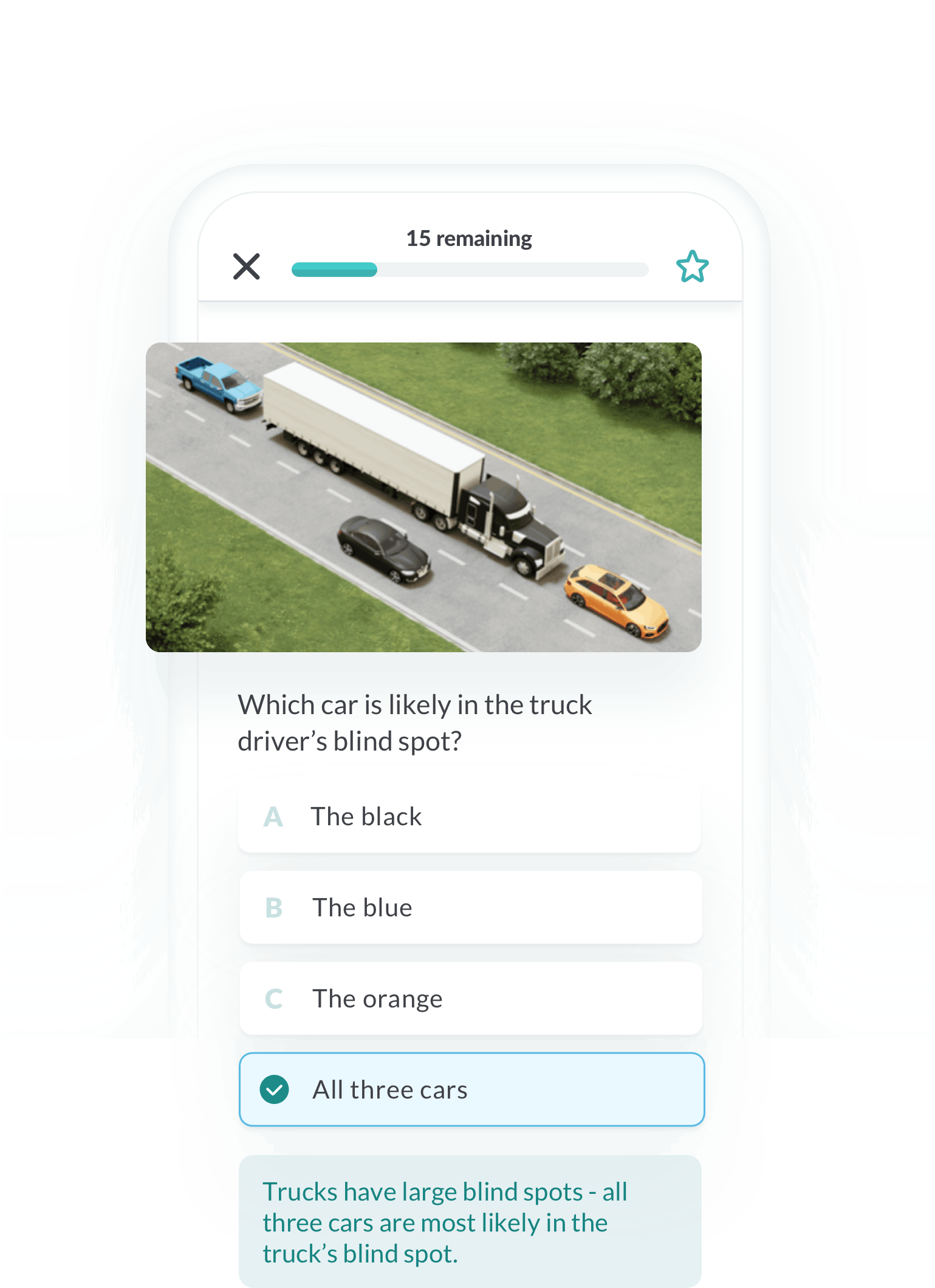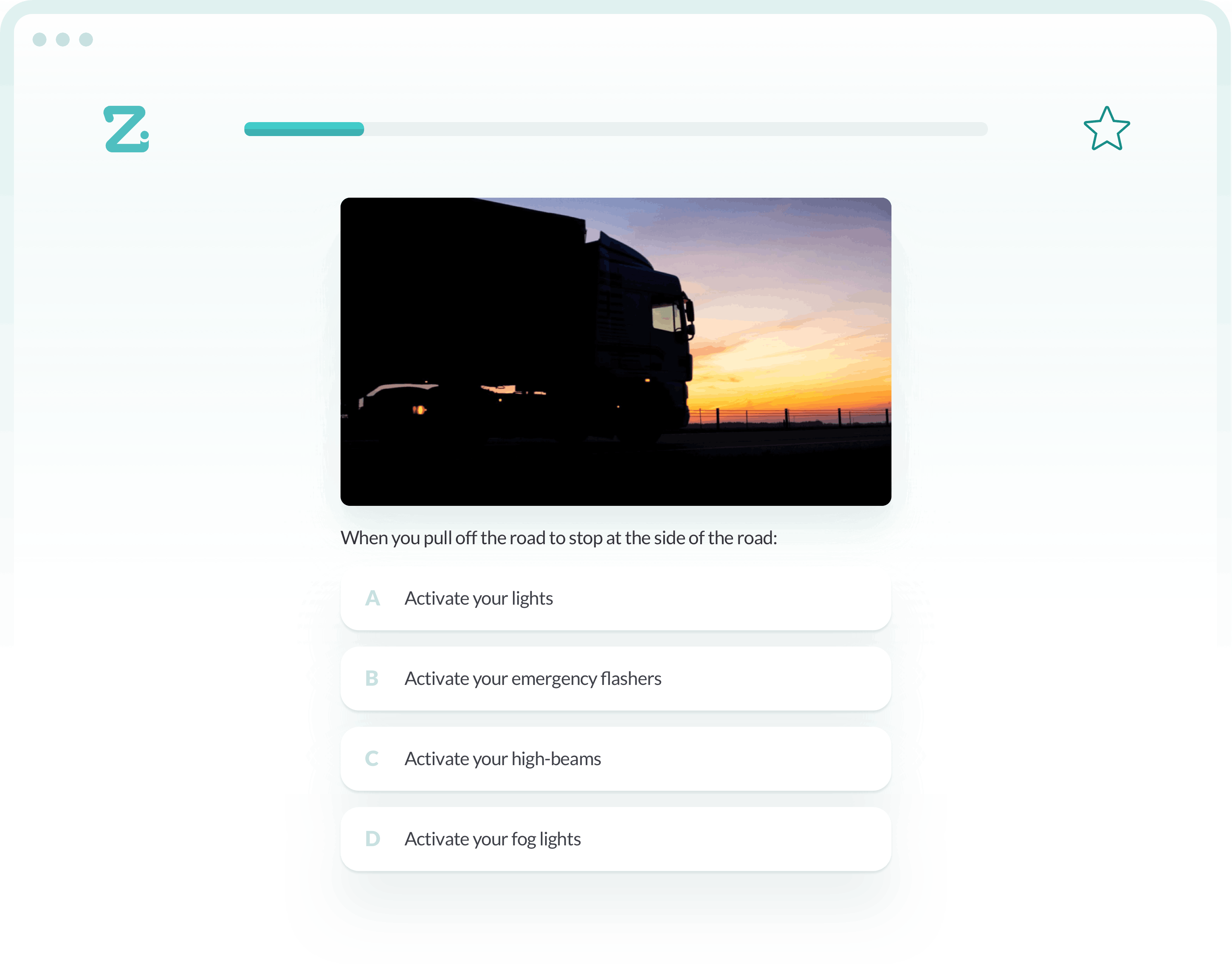
How to Prepare for the Test
All of Zutobi’s material is designed to be easy to understand and easy to remember. With our course, you’ll learn everything you need to know in order to pass your LGV test on the first attempt, and you’ll learn it in a way that makes recalling it on test day a breeze.


